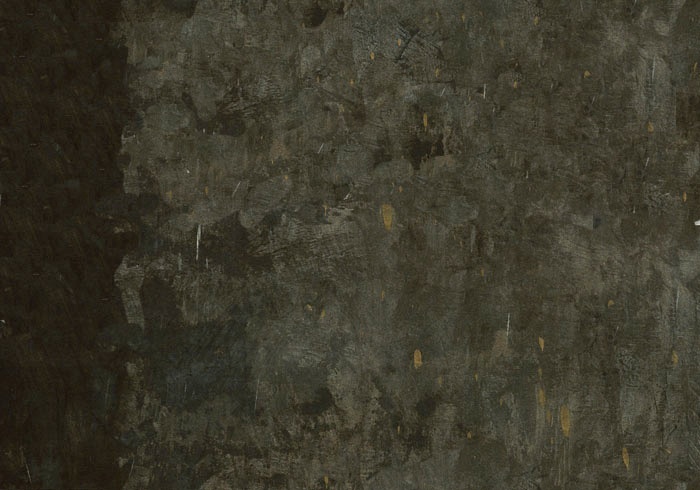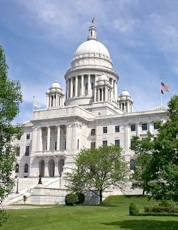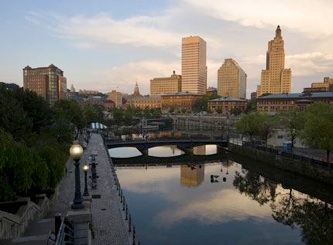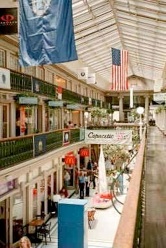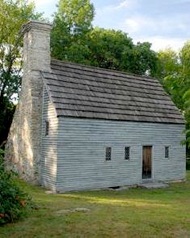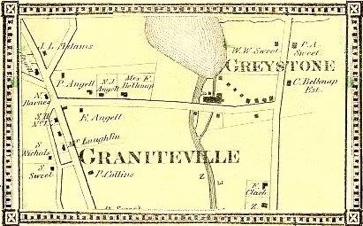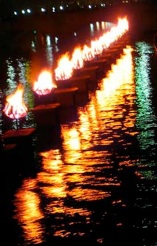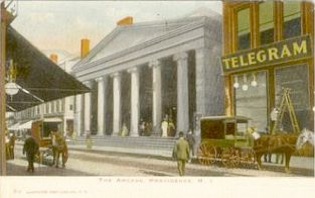I grew up in Rhode Island, which used to be “Little Rhody” but is now “The Ocean State.” My little corner of the littlest state was the part originally claimed by Thomas Angell, one of those who left the Massachusetts Bay Colony with Roger Williams to found the state in 1636.
Thomas Angell’s neck of the Rhode Island woods included Graniteville, now in the town of Johnston, where I spent most of my youth, having moved across the Woonasquatucket River from Greystone, in North Providence at the age of three (see map below). Greystone was a transplanted community of folks from Yorkshire, England, whose lives centered around a woolen mill there, which employed my father, James, when he emigrated at the ripe old age of 20 in 1929. It was there that he met and married my mother, Edith Firth, in 1936, a marriage that lasted over 50 years.
I walked to Graniteville School, where I had a crush on my red-headed 2nd grade teacher, Mrs. Margaret Sullivan, who was also my neighbor. I was in Boy Scout Troop 1 Graniteville up to the rank of Eagle Scout, attended the Jamboree in Valley Forge in 1964, and spent many a summer at the local Camp Yawgoog. My scoutmaster was my immediate neighbor, Arthur Jackson, one of the nicest people I have ever met.
As a child I also spent time at Roy Carpenter’s Beach in Matunuck, on the ocean, where my relatives, the Marchants, had a cabin. It was from that spot, where the wild roses bloomed, that the family went swimming, fishing, and crabbing for blue claws, and picked blueberries and potatoes. Matunuck is not far from Jerusalem, which is across an inlet from the fishing port of Galilee. From Galilee a ferry sets sail for Block Island, and it is the home of George’s Restaurant which sells some of the tastiest clam chowder and clam cakes in the state.
I was also a choirboy in the English-style choir of boys and men at Grace Episcopal Church, Providence, from the age of 8 as a soprano through college as a tenor. The organist and choirmaster, Fred Cronhimer, lived near me, so I commuted into church with him and his wife for two services every Sunday, and I took the bus into Providence three times a week for rehearsals—not bad for an eight year old! (While I was at Grace Church the double organ was updated by Casavant Frères of St-Hyacinthe, Québec. What a magnificent sound it had! When I first heard the organ roar on the CD Neon Bible by Arcade Fire I recognized the sound of a Casavant. A little research proved I was right!)
With a concert in June in the Rhode Island School of Design Auditorium the choir earned money to send the boys to camp at the Episcopal Conference Center in rural Pascoag. While older folks were conferencing we boys were swimming in the nearby lake or playing baseball. We were expected to attend compline in the evening, however, but it was a small price to pay for the fun we had.
After the Graniteville School I moved on to the new Johnston High School, where a favorite teacher, Mr. Picano, suggested I leave for a better place, as he was about to do. With some coaxing, and with the helpful example of my neighbor, Joan Hopkins, I enrolled in Classical High School in Providence, the very old yellow brick building on Pond Street. Classical required at least two years of Latin, though four were needed for a “Latin Diploma.” (I took 2, plus 3 of German.) Jacket and ties were required of boys, and no jeans were permitted.
Classical also offered three years of Ancient Greek, four years of French and three years of German. No other languages were offered. I sputtered there, coming from a rural background, and at one point was told by one of the counselors, Mr. Leonard, that I should leave because I was “obviously not Classical material.” I persisted and eventually made the honor roll. I was also heavily influenced by my chemistry teacher, Mrs. Mary Lafferty. The old school was torn down shortly after I graduated, and the yellow bricks (actually tan) were sold as souvenirs. When the monolith that replaced the old building was done, Pond Street and many wonderful memories disappeared under it.
At some point the school symbol of a winged Mercury—the yearbook was called The Caduceus, no less—was replaced by rather buxom, operatic likeness of Athena. Thankfully my class of 1965 remembers The Truth, and the recent reunion t-shirt, designed by classmate Kadi Kiis, depicted Mercury, with the date in Roman Numerals (of course). None of us forget Julius Caesar in second year Latin, “Omnes Gallia in tres partes divisit.” I’ll be able to conjugate the verb “to love” until the day I die: amo, amas, amat, amamus, amatis, amant.
Although Classical was then considered to be “a stepping stone to Brown University” my grades forced me to aim a tad lower, so I went to Providence College, a Dominican school, where my mother worked, giving me a half tuition rate. At the time Providence was a school of 2,500 men which offered a Ph.D. in chemistry, so my professors were excellent, and my preparation for graduate school was second to none. I lived at home, commuted with my mom, and was able to make enough money during the summer to pay my tuition myself. No loans! Jackets and ties were also required at Providence, so the Classical clothes continued to serve me.
Armed with a B.S. (cum laude) from Providence in 1969, I traveled south by 12 hours of Interstate to Chapel Hill, North Carolina, and I became a Tar Heel for four years while I worked on my Ph.D. in inorganic chemistry under Dr. William E. Hatfield. (Bill was one of the West Virginia Hatfields who were always fighting with the McCoys. He was a great teacher and an excellent mentor.) I was awarded my Ph.D., and started my teaching career, in 1973.

